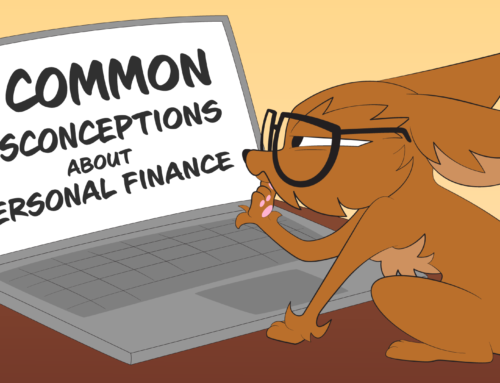The COVID-19 pandemic has just caused the stock market to decline 20% in record time. In fact, this decline is the fastest on record for the U.S. stock market since World War II. What should you do in response to the stock market drop? Here are five steps you should take today:
Step 1: Don’t Panic!
This is not the time to panic and do something that you will regret later. Panic-based decision-making is never a good idea, so don’t let emotion lead you to make quick and rash decisions. Selling out after a 20% decline is a recipe for locking in your losses, likely forever. I highly doubt that if you sell out now, you will want to buy back in when things are lower. You will likely be stuck waiting it out until long after the recovery is underway.
Let’s remember what happened in 1987 as one example of a significant decline in a very short time due to a quick shock. In 1987 the stock market declined 30% from its high to its low over three months. After that, the markets went on to rally for the next 13 years without another 30% decline.
Remember, your broadly diversified portfolios are designed to participate in market gains but also to minimize loss as much as possible during the downturns.
Step 2: Recognize Your Risk Tolerance
Your risk tolerance is something that is tested during a stock market correction. This is when we are reminded of what levels of risk are appropriate for ourselves. Nobody feels good about losing 20%, but some of us can’t take the losses, even if they’re just short term. Ask yourself these questions:
- What is my time horizon for this money?
- Could I handle a decline of 20% or more, knowing that my reward could be greater in the long term?
- Could I handle earning half as much as everyone else when the markets are rising, knowing that my investments are safer or less volatile in periods of decline?
- Do I get overly depressed about my portfolio when it declines? (Don’t get me wrong; we all get a little depressed when we lose money.)
- Could you even consider buying stocks during the stock market decline? Buying low is the name of the game, right?
If you’ve learned in this correction that you need to take less risk, then when the stock market recovers (and I’m certain it will), that is the time to consider changing your asset allocation to a more conservative posture—not in the trough.
Step 3: Remind Yourself about Your Long-Term Goals
Why did you invest in the first place? I know nobody enjoys being down 20% in a mere three weeks, but we must remind ourselves of our reason for investing this money. Whether you are investing for retirement or a specific goal, just remember it’s the long haul that wins the prize. Now is a time to remind yourself that you don’t actually need this money tomorrow, so riding out the correction is the smartest move to make.
It is important not to give in to the temptation to make sudden moves during market downturns.
Step 4: Remember We’ve Been Here Before
I know we have never seen COVID-19 ravage the financial markets before; however, let’s recognize how many times humanity has faced uncertainty and always won in the long run.
- 2003—SARS infected 8,000 people. It was brought to an end by good hygiene (hand-washing) and environmental factors (warming temperatures), and it burnt out when enough people became infected to build immunity to the disease.
- 2009—H1N1 flu caused a pandemic in ‘09 and has become a seasonal flu, usually recurring in the colder months.
- 2014—Ebola in West Africa ended with human intervention, when the WHO declared a coordinated international response. Countries worked together to treat the sick, and when a second outbreak occurred in 2018, human intervention made the difference again when treatments developed from the first outbreak were offered to patients.
We don’t know yet how long it will be until we have COVID-19 under control, but we do know that world health professionals have always saved the day, and I don’t suspect this situation will be any different. There are always going to be things that we can’t predict, but we must remain calm and think and invest rationally.
Step 5: Diversification Matters
A diversified portfolio doesn’t guarantee profits or ensure that investments won’t decrease in value, but it does help lower risk. By spreading investments across a variety of asset classes, investors can buffer the effects of volatility on their portfolios. Overall returns won’t reach the highest highs of any single investment—but they won’t hit the lowest lows either.
For investors who want to avoid some of the stress of downturns, diversification can help lower volatility.
Buy More?
Long-term investors will be rewarded if they are willing to invest when markets are down 28% from their highs. Investors should be open to putting cash to work here. Like the old adage says, “Buy low! Sell high!”
FMF365.com offers fully automated, low-cost managed portfolios for as low as 0.45%! Check out our offering on the third floor of my virtual office building.
I’m Here To Help!
Whether you need personal finance or investing guidance, contact Dan@firstmasonfinancial.com today!











